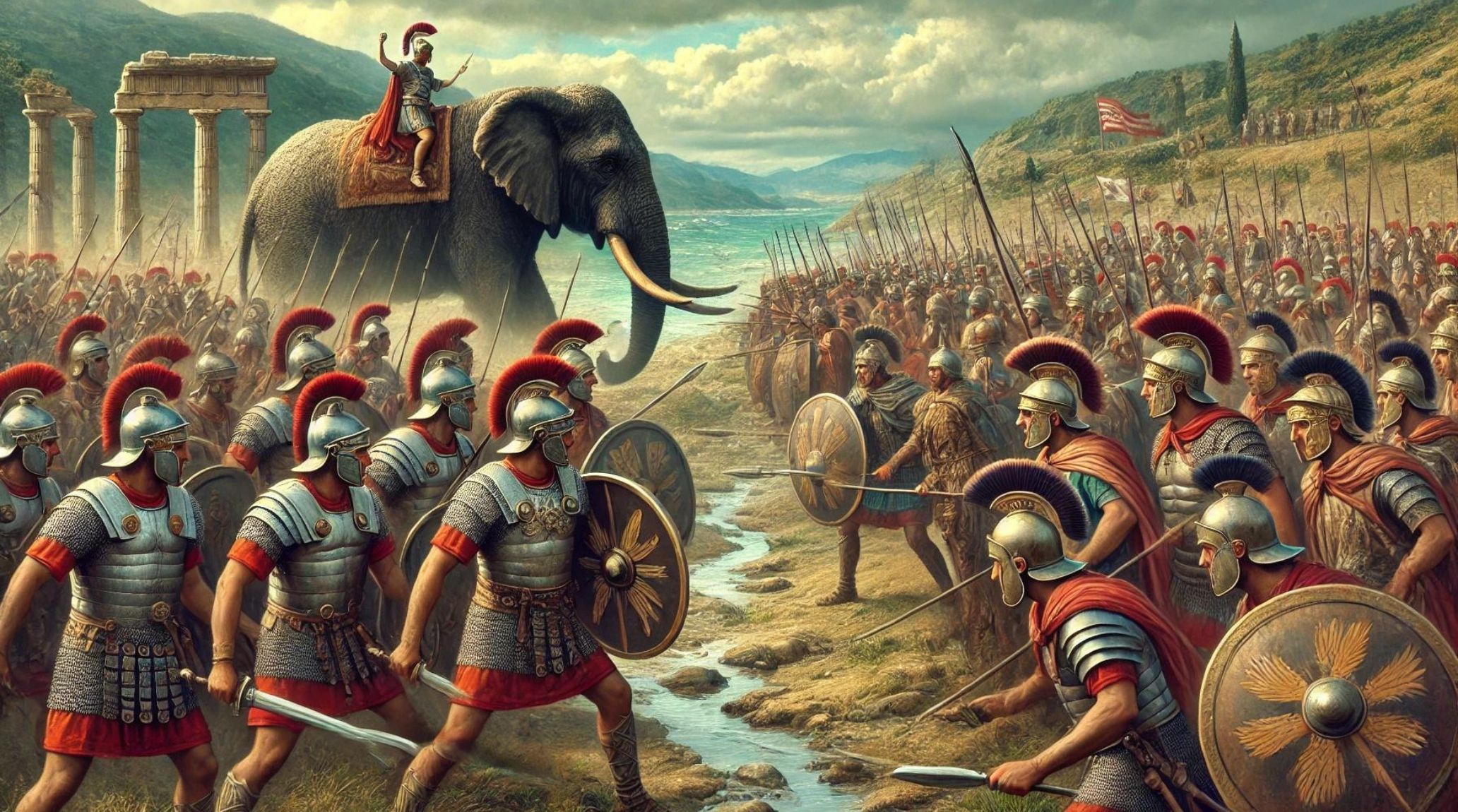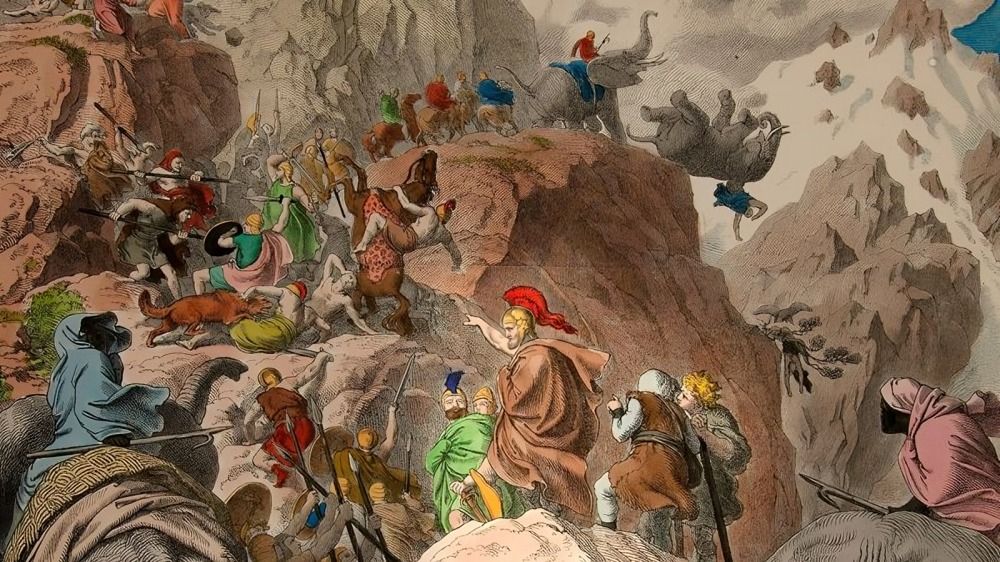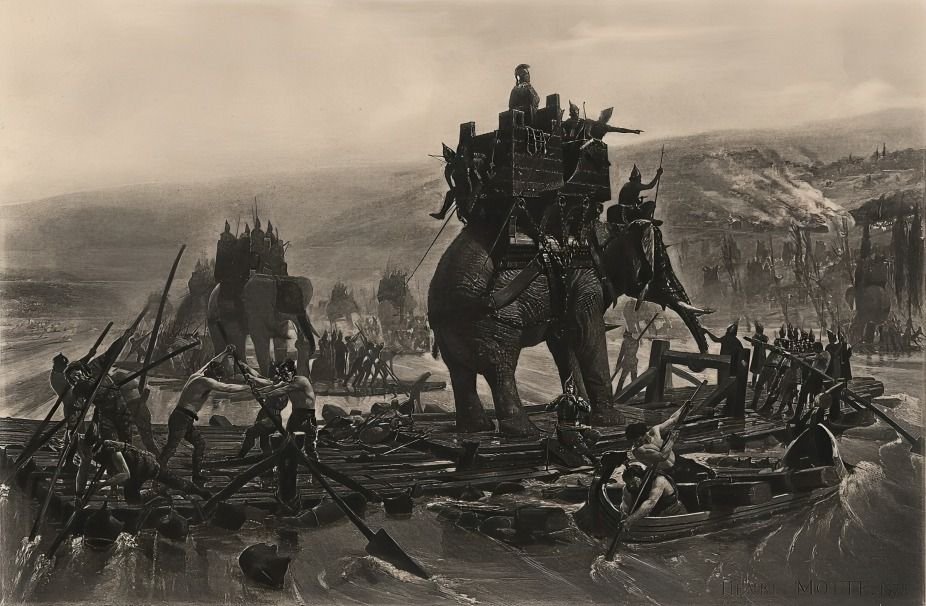
“
The Punic Wars were a series of monumental conflicts between Rome and Carthage that shaped ancient history. This article highlights 20 key facts about the Punic Wars, offering insights into the strategies, leaders, and pivotal moments that defined the struggle between these two powerful civilizations.1
1
”
The Punic Wars were a series of three conflicts between Rome and Carthage, ending with Carthage's destruction and Rome's dominance over the western Mediterranean. Roman expansion in Italy from 298 to 201 BCE set the stage for these wars. 1
Originally from Lebanon, the Phoenicians were renowned sea traders and naval warriors who spread the first alphabet. Their extensive trade routes along North Africa and Europe's Mediterranean coasts positioned them as a rival to Rome. 2
The Punic Wars primarily stemmed from the conflict between Carthage's existing empire and the expanding Roman Republic. The central issue was control over Mediterranean trade routes. 3

The First Punic War, fought from 264 to 241 BC, saw Hamilcar Barca, the Carthaginian general and father of Hannibal, leading Carthage’s military efforts. This conflict primarily revolved around control of Sicily and ended with Carthage's defeat.
During the Second Punic War, which lasted from 218 to 201 BC, Hannibal Barca, now a prominent Carthaginian general, famously crossed the Alps with war elephants to launch a land attack on Rome.4
The Third Punic War, spanning from 149 to 146 BC, culminated in the complete destruction of Carthage. After a prolonged siege, the Romans successfully razed the city, marking the end of Carthage as a significant power.5
One of the most famous battles of the Punic Wars occurred in 216 BCE at Cannae. Hannibal’s smaller force annihilated a much larger Roman army using a double envelopment tactic, resulting in one of Rome’s worst military defeats. 6
Roman general Scipio Africanus reversed Rome’s fortunes during the Second Punic War by invading Carthaginian territory in North Africa. His decisive victory at the Battle of Zama in 202 BCE forced Carthage to surrender and ended Hannibal’s campaign.7
Before the Punic Wars, Rome had little experience in naval warfare. However, during the First Punic War, they rapidly built a fleet and trained sailors, enabling them to challenge and eventually defeat Carthage at sea. 8
Despite suffering devastating defeats, such as at Cannae, the Romans never gave up. They showed remarkable resilience, continually raising new armies and adjusting their strategies until they eventually outlasted Carthage in each war. 9
Carthage was a wealthy city-state due to its extensive trade networks across the Mediterranean and North Africa. Its strategic position allowed it to control valuable trade routes, leading to its prosperity but also jealousy from rivals like Rome. 10
Many of the key conflicts in the First Punic War were naval battles, with both Rome and Carthage vying for dominance over Mediterranean trade routes. The Battle of Ecnomus, for example, is considered one of the largest naval battles in history. 11
Sicily was the initial flashpoint of the First Punic War, as both Rome and Carthage sought control of the island. Its fertile land and strategic location in the Mediterranean made it a highly prized possession for both empires.12

Hannibal famously brought war elephants on his journey through the Alps, though many died during the harsh trek. Despite their limited effectiveness in battle, the elephants became a symbol of his audacious campaign against Rome.
The Third Punic War (149–146 BCE) ended with the complete destruction of Carthage. Rome laid siege to the city for three years, and after its fall, they razed Carthage to the ground, selling survivors into slavery and salting the earth. 13
Both Rome and Carthage employed sophisticated siege tactics. Carthage, in particular, developed impressive fortifications for defense, but Roman engineering superiority eventually allowed them to breach these defenses in the final war.14
As a result of its victories in the Punic Wars, Rome acquired its first overseas provinces. Sicily, Sardinia, and Corsica became Roman territories, laying the foundation for Rome’s expansion throughout the Mediterranean. 15
After his defeat at Zama, Hannibal fled Carthage and spent years in exile, serving as an advisor to various eastern rulers. He continued plotting against Rome but was eventually cornered and took his own life to avoid capture. 16
The Roman senator Cato the Elder ended every speech, regardless of the topic, with "Carthago dehistory lenda est" ("Carthage must be destroyed"). His insistence reflected growing Roman fear and hatred of Carthage, culminating in the Third Punic War. 17
Rome’s victories in the Punic Wars not only destroyed Carthage but also cemented Rome’s dominance in the western Mediterranean. The wars set the stage for Rome’s transformation into an empire, expanding its influence across Europe, Africa, and Asia.18


